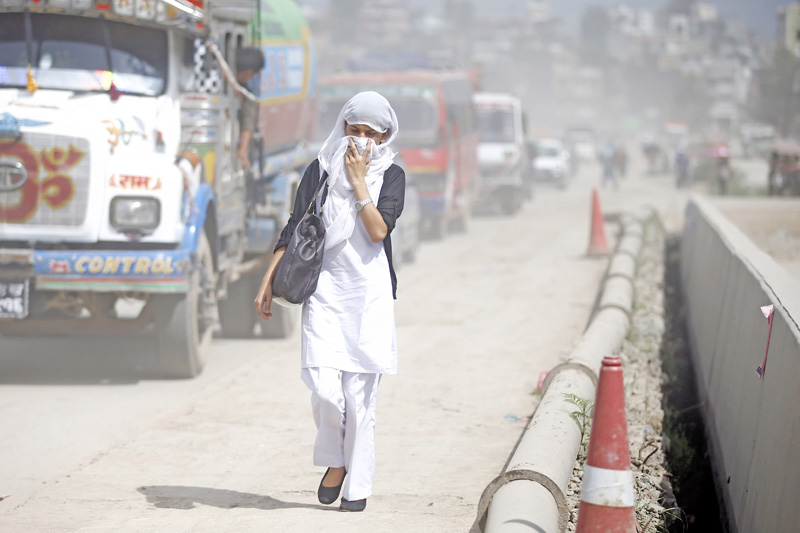WHO calls for improving air quality
Kathmandu, September 27
Air pollution is the world’s biggest environmental risk to health and must be addressed on a priority basis as it continues to rise, causing long lasting disease and illness in addition to around 799,000 deaths annually in countries, including Nepal, of the World Health Organisation South-East Asia Region.
According to figures published by WHO on Ambient Air Pollution today, nearly 740 people died from acute lower respiratory infection, 1,770 from chronic obstructive pulmonary disorder, 932 from lung cancer, 3,328 from ischemic heart disease and 3,183 from stroke in 2016 in Nepal.
The deaths per 100,000 capita are 26.
“The new WHO burden of disease estimates show that 94 per cent of the premature deaths caused by air pollution are due to cardiovascular disease, chronic obstructive pulmonary disease and lung cancers. The remaining are from acute respiratory infections in children under five years of age.
The magnitude of the health impact of air pollution calls for urgent action to prevent these avoidable risks and deaths,” said Dr Poonam Khetrapal Singh, regional director for WHO South-East Asia.
The country-level data in the new report serve as an opportunity for policymakers to focus on urgent multi-sectoral actions to promote health.
According to WHO, countries in the region are already working on addressing household air pollution to reduce the burden of noncommunicable diseases.
The introduction of clean and sustainable energy policies and lean and efficient cooking technologies are a key part of the actions needed to clean-up household air pollution caused by the burning of solid fuel such as wood.
Similarly, addressing outdoor air pollution requires a focus on the sources of pollution through a whole-of-government approach. Solutions go beyond simply controlling emissions and should include choices that actively promote health, Dr Khetrapal Singh explained.
Measures to improve the availability and quality of air quality data are also important in monitoring trends and improvements in health.
Further efforts and investments should be made to encourage as many cities and countries in the region to closely monitor air quality, using standard, good quality and comparable methods and instruments, as well as making this information available.
The data should be used to strengthen measures against inefficient modes of transport, household fuel and waste burning, coal-fired power plants and industrial activities – some of the major sources of air pollution, it suggested.
“Governments across the region should find innovative ways to manage fast-paced growth and development with health concerns related to outdoor air pollution,” the regional director said, highlighting that the new WHO report on air pollution exposure and health impacts is an opportunity for countries to review and enhance efforts to improve air quality.
The report estimates population exposure to PM 2.5 at country level through a new model that relies on satellite data and ground measurements.
The new model is a big step forward as it provides reliable data for countries with little information on air pollution levels, either because there is no air quality monitoring or it is not available.
Using the WHO data and decision-making frameworks to tackle air pollution is essential to achieving the Sustainable Development Goals, particularly those that relate to health, urban development and sustainable and clean energy, said WHO.






